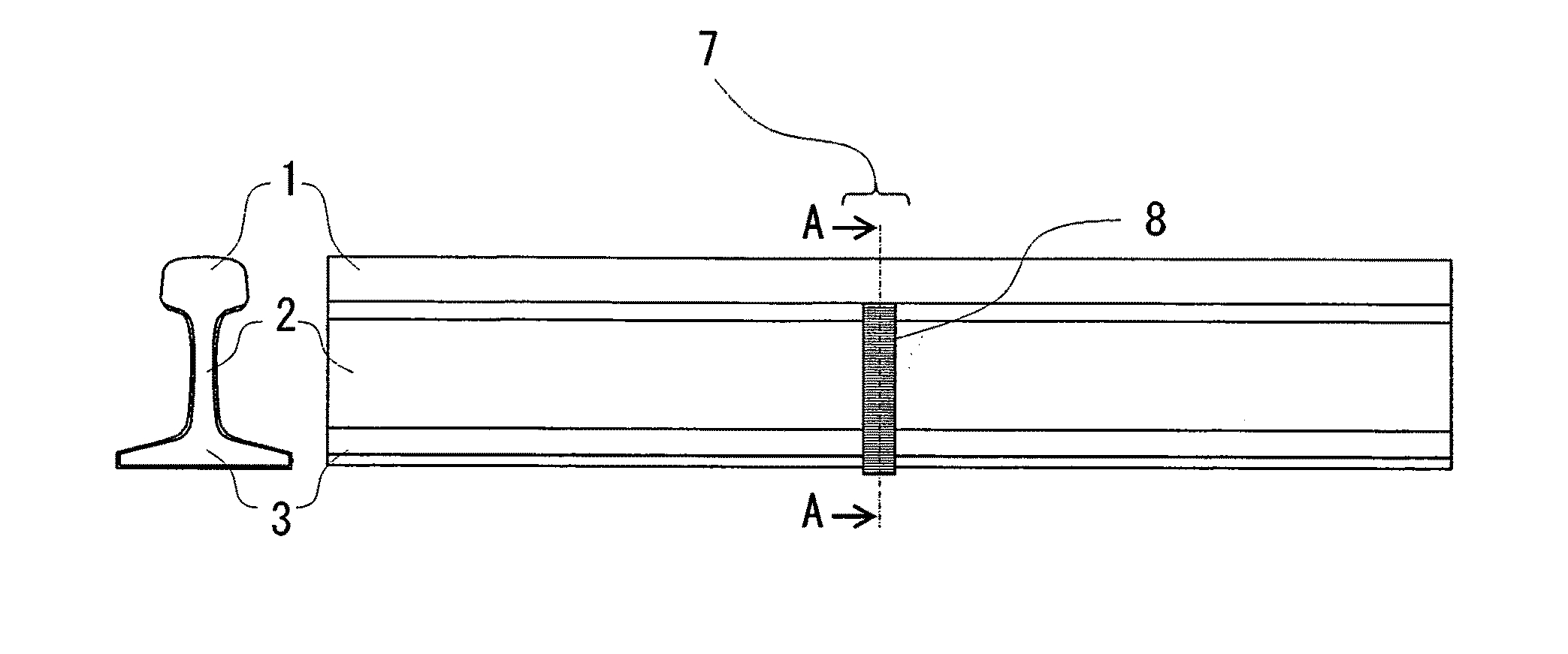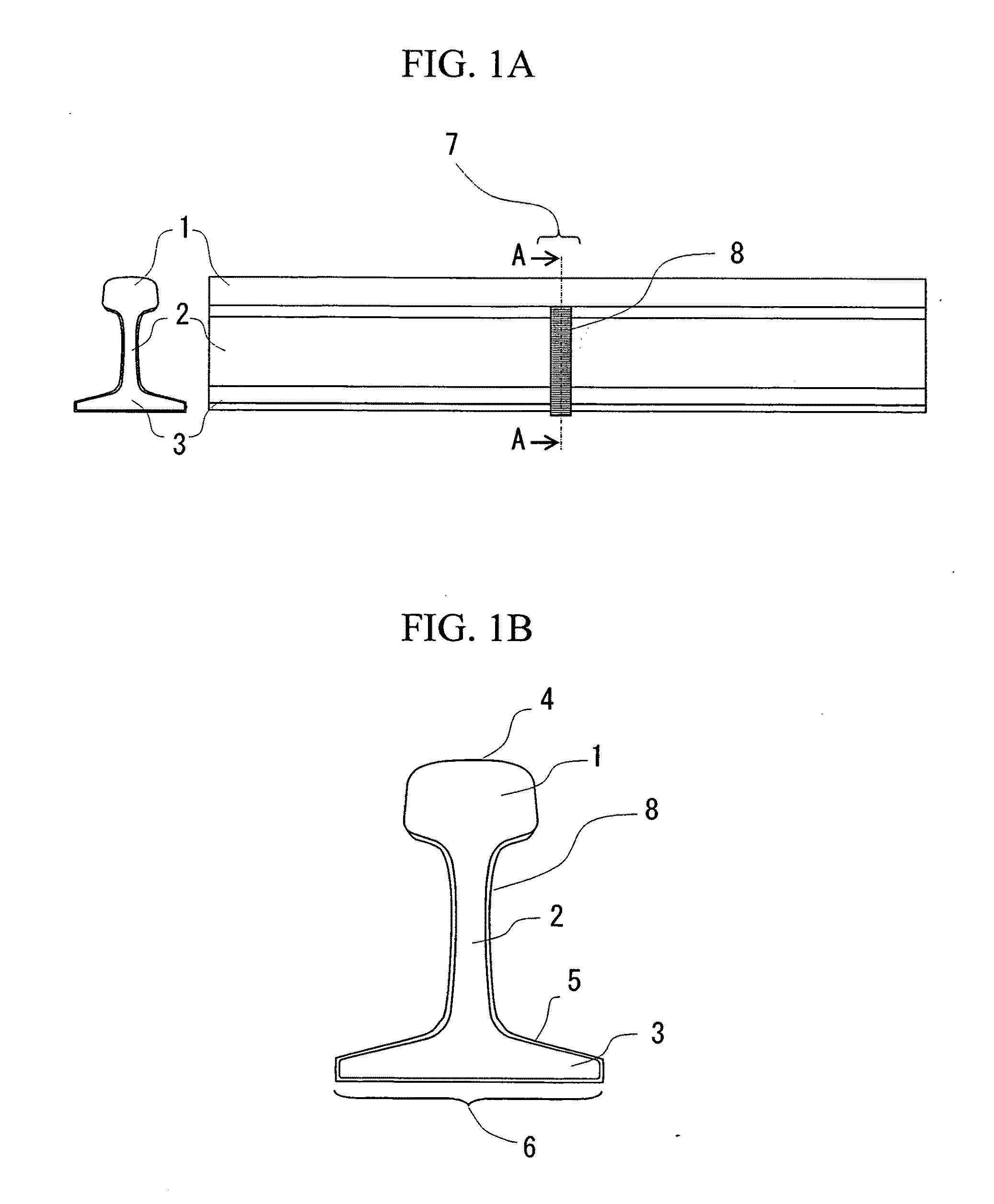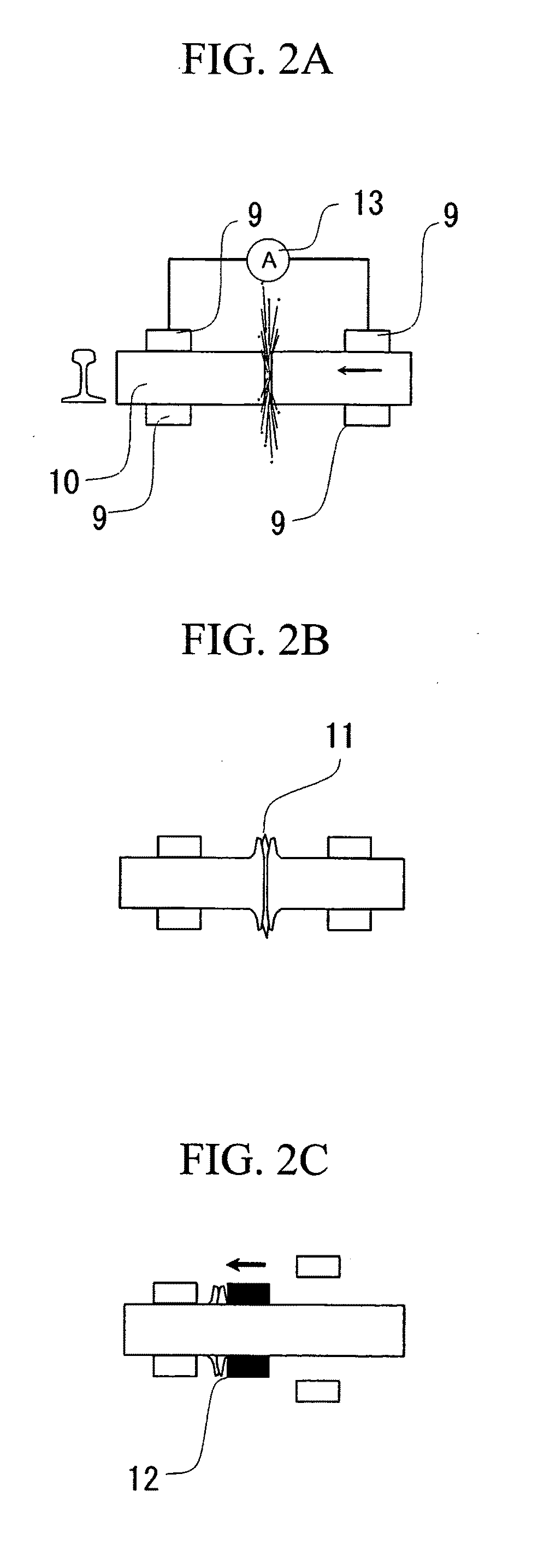Method of cooling rail weld zone, device for cooling rail weld zone, and rail weld joint
a cooling device and weld zone technology, applied in the direction of resistance welding apparatus, heat treatment process control, track maintenance, etc., can solve the problems of increasing burden caused by bending load applied to a sole portion, increasing requiring maintenance costs of the rail web portion. , to achieve the effect of reducing preventing fatigue cracks easily occurring, and improving the residual stress of the rail web portion
- Summary
- Abstract
- Description
- Claims
- Application Information
AI Technical Summary
Benefits of technology
Problems solved by technology
Method used
Image
Examples
examples
Test Method
[0282](As for Method of Testing Fatigue of Rail Web Portion)
[0283]A test for evaluating the fatigue strength of a rail web portion against horizontal cracks was performed by a method that is schematically shown in FIG. 25. A rail weld zone was placed on a surface plate 27, and a load was repeatedly applied from a rail head portion of the weld zone by a pressing tool 28. The radius of curvature of the pressing tool 28 was 450 mm close to the radius of curvature of a wheel. The applied load was set to 30 tons for the purpose of quick progress of an experiment with consideration for the fact that an actual heavy load was about 20 tons. Since a test piece floats if the minimum load is set to 0 tons in the repetition of a load, the minimum load was set to 4 tons to avoid the floating of the test piece. The frequency of the repetitions of a load was set to 2 Hz, and the test ended at the time point where cracks were generated at the weld zone. Further, if the test piece was not...
example a
[0292]Table 2 shows examples that were obtained by completing the transformation of the entire rail web portion from austenite to pearlite after the flash butt welding of a rail and then cooling the following region of the rail web portion, which was limited in the longitudinal direction, at a cooling rate that exceeded a natural cooling rate and was not lower than a cooling rate of a rail foot portion.
[0293]A cooling method in this case was as follows: A region of a rail web portion in the longitudinal direction of the rail web portion, which was calculated by the product (L) of a k value of Table 2 and the width LAc1 of a rail web portion where the maximum heating temperature of the rail web portion is not lower than Ac1 in the longitudinal direction of the rail web portion, was cooled by controlling a flow rate and flow velocity of compressed air or compressed air containing water droplets with a controller; a region (a range narrower than the region) of a foot portion in the lon...
example b
[0301]Table 3 shows examples that were obtained by cooling the following region of the rail web portion of the weld zone, which was limited in the longitudinal direction, after the flash butt welding of a rail and at least a part of a temperature range until the completion of transformation to pearlite from an austenite temperature region where the temperature of the rail web portion exceeded Ae, at a cooling rate that exceeded a natural cooling rate and was not higher than 5° C. / s. A cooling method in this case was as follows:
[0302]A region of a rail web portion in the longitudinal direction of the rail web portion, which was calculated by the product (L) of a k value of Table 3 and the width LAc1 of a rail web portion where the maximum heating temperature of the rail web portion is not lower than Ac1 in the longitudinal direction of the rail web portion, was cooled by controlling a flow rate and flow velocity of compressed air or compressed air containing water droplets; a region ...
PUM
| Property | Measurement | Unit |
|---|---|---|
| length | aaaaa | aaaaa |
| compressive stress | aaaaa | aaaaa |
| width | aaaaa | aaaaa |
Abstract
Description
Claims
Application Information
 Login to View More
Login to View More - R&D
- Intellectual Property
- Life Sciences
- Materials
- Tech Scout
- Unparalleled Data Quality
- Higher Quality Content
- 60% Fewer Hallucinations
Browse by: Latest US Patents, China's latest patents, Technical Efficacy Thesaurus, Application Domain, Technology Topic, Popular Technical Reports.
© 2025 PatSnap. All rights reserved.Legal|Privacy policy|Modern Slavery Act Transparency Statement|Sitemap|About US| Contact US: help@patsnap.com



